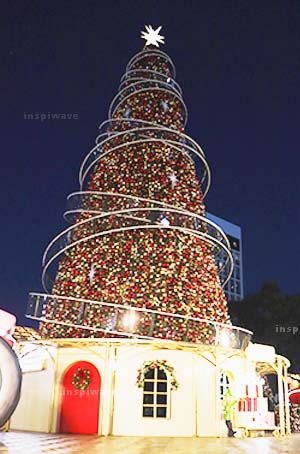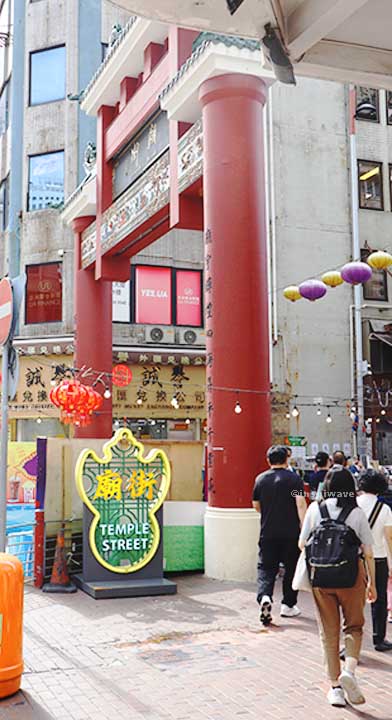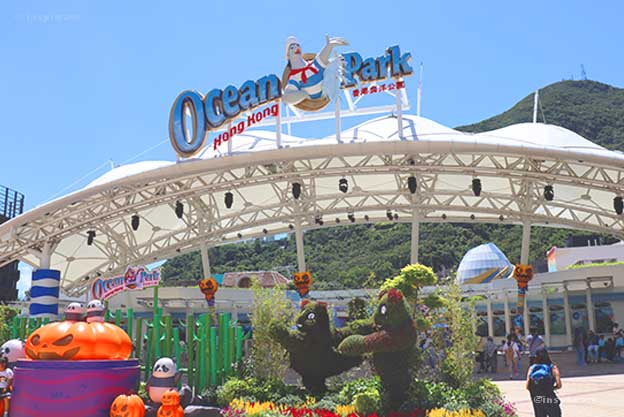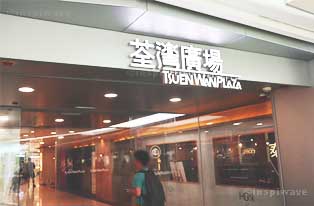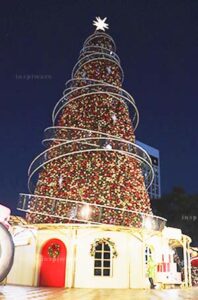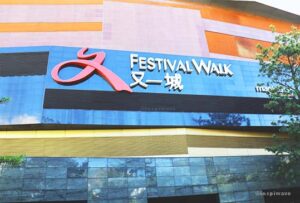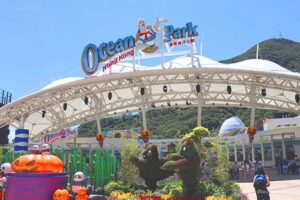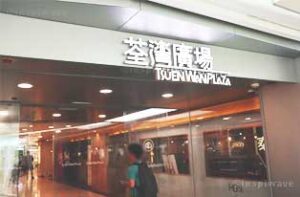Welcome to Hong Kong. Experience One of Exhilarating Cities in the World!
Whether it is your first time to visit Hong Kong or you have been to this wonderful place many times, I believe it will bring you endless freshness and inspiration.
Hong Kong is a place that changes constantly, whether it is architecture, transportation, fashion trends, lifestyle, business environment, or even the people living there. If it has been more than 24 months since you last visited here for tourism or work, you may find that many places have changed.
Hong Kong people are energetic and hardworking, and it is safe to travel in Hong Kong. The delicious and authentic food is unchanging, so please enjoy your journey and experience this fantastic place.
Reasons Why You Should Visit Hong Kong
Step into the most fashionable and trendy Asian metropolis. Hong Kong is one of Asia’s most fashionable and distinctive cities, a place where East meets West, on par with Tokyo, New York, and London, blending multiple cultures.
Walking into Hong Kong Island and Kowloon Peninsula, you’ll find flagship stores of the most upscale luxury brands in the heart of the city. You can see all kinds of styles and eras of clothing on Hong Kong people. They can be very avant-garde or very casual.
You don’t necessarily have to wear a suit and skirt in Central. The fashion styles are various. Chinese, Japanese and Korean fashion can appear at the same time.
Change is the only constant in life
Hong Kong’s landscape is constantly changing, especially in urban areas. New buildings appear every so often; some are cultural and recreational facilities built by the government, while others are revitalization projects that repurpose old buildings.
For example, many of these are factory buildings that have been converted into art studios. Tai Kwun in Central was converted from an old police station into an exhibition and art venue. The subway lines are constantly expanding, and each district has a new urban landscape every 3 to 5 years, making it a place full of surprises.
Savor the most delicious local cuisine in Hong Kong
Authentic food has always been one of Hong Kong people’s favorites. Besides traditional Hong Kong-style cafes, there are many unique street foods, including grilled fish balls, braised sweet potatoes, baked egg waffles, shark’s fin soup, pan-fried stuffed three treasures, French toast, Hong Kong-style milk tea and etc. They are both delicious and inexpensive, so gather information early and fly over for decent meals and snacks!
Bustling shopping malls that you’ll want to explore even when your feet are tired
Hong Kong was practically built for shopping. The shopping districts of Tsim Sha Tsui, Mong Kok, Central, and Causeway Bay are filled with department stores, specialty shops, outlets, designer boutiques, and numerous pharmacies.
Whether it’s trendy clothing, fashion boutiques, cosmetics, or designer handbags that ladies absolutely must buy. Or men might want to buy cameras, electronics, toys, game consoles. You can find many more beautifully packaged and delicious cakes, snacks, candies, chocolates, and exquisite souvenirs.
Even with rising prices here, you’ll still find shopping a joyful and pleasant experience.
“Old Hong Kong” is full of nostalgia.
Don’t think Hong Kong is just about skyscrapers; this modern financial center evolved from a century-old fishing port.
Sai Wan and Sheung Wan are full of historical buildings, as are Yau Ma Tei, Mong Kok, Shek Kip Mei in Kowloon, Kowloon City, and even Tai Kok Tsui.
The New Territories districts of Tsuen Wan, Sha Tin, Tai Po, Stanley, Cheung Chau, and outlying islands are all old districts, formerly inhabited by various craft craftspeople. They retain a strong “Old Hong Kong” flavor with traditional temples, alleyways, bungalows, and British-style buildings, blending Chinese and Western styles, where old and new coexist.
Arriving here feels like stepping back into the 1990s; it evokes both amazement and complex emotions.
Common questions related to Hong Kong
What does “Hong Kong, Kowloon, and the New Territories” refer to?
In everyday speech, “Hong Kong” usually refers to Hong Kong Island, which is surrounded by sea. The harbor between Hong Kong Island and the Kowloon Peninsula is Victoria Harbour. The Kowloon Peninsula is connected to the New Territories and is part of land. The New Territories are connected to mainland China.
It is generally defined as the area north of Boundary Street in Kowloon. These three regions also divide Hong Kong into three main parts.
Usually, the region is specified at the end of the mailing address. The reason is that there are occasionally several addresses with the same name, which may be similar housing estate names or even identical names, so the region name is used to distinguish them.
In addition, Hong Kong is subdivided into eighteen districts. For example, there is the Central and Western District (including Central, Admiralty, Kennedy Town, The Peak, etc.). Hong Kong Island has four districts, Kowloon has five districts, and the New Territories has nine districts. These districts represent communities.
How is Hong Kong climate?
Hong Kong is located in the subtropics, and the best weather is from mid-October to December. Apart from January to March when temperatures are lower, the remaining nine months are also quite warm.
Summer lasts from July to mid-September. In addition to the hot weather and frequent rainy days, it is also typhoon season. There are 5 to 10 typhoons in Hong Kong every year, including tropical cyclones and monsoons, which bring a lot of rain. Sometimes the rain is quite heavy, and red rain, black rain and thunderstorm warnings will be issued.
Summer temperatures can reach over 30 degrees Celsius, while winter temperatures are around 10 to 20 degrees Celsius, sometimes dropping below 10 degrees Celsius.
Frost can form on mountaintops and high places, but very cold days are rare. Hong Kong’s seasons are not very distinct. Near the end of the year, close to Lunar New Year’s Eve (December), it can still be quite warm, enough to wear a t-shirt.
Humidity is highest from April to June, while the climate becomes very dry starting in November.
What is the time difference in Hong Kong?
Hong Kong is 8 hours ahead of Greenwich Mean Time (GMT), i.e., GMT +8.
It shares the same time zone as Taiwan, Singapore, Japan, Malaysia, and South Korea in Southeast Asia, so there is no time difference.
To find out the time difference between Hong Kong and your location, you can visit the Hong Kong Observatory website and enter your location to find out the time difference:
Astronomy and time> Time service> international Time Zone
URL: https://www.hko.gov.hk/en/gts/time/worldtime2.htm
Hong Kong has a fixed time of year and does not observe daylight saving time.
Currency and prices
The currency used in Hong Kong is the Hong Kong dollar ($). Banknotes are available in denominations of $1000, $500, $100, $50, $20, and $10; coins are available in denominations of $10, $5, $2, $1, 50 cents, 20 cents, and 10 cent.
Hong Kong has always been known for its “expensive” prices, especially in the city center and shopping malls. Hong Kong has been called one of the cities with the highest “cost of living,” which is true in this respect.
A lunch at an ordinary tea restaurant costs between HK$55 and HK$65. However, there is no sales tax in Hong Kong, so goods are also inexpensive and affordable.
On the other hand, compared with other countries, especially Europe and North America, Hong Kong goods are relatively inexpensive, and travel can be done at any price. As long as you plan carefully, your trip will not exceed your budget.
How is the safety situation in Hong Kong?
Hong Kong is generally considered safe, but even in an international metropolis like Hong Kong, there are still some minor issues. In older districts if where there are no police patrols at night, and in less populated suburban areas, pickpockets and thieves still occur, though they are a minority.
Disputes are more likely to arise on crowded public transport such as the subway and buses. For example, avoid noisy people, fighting for seats, and jumping the queue.
Avoid going to secluded places alone at night, and take extra care of cash, valuables, and handbags. When taking a taxi, be sure to ask about the price. You can use a taxi app to preview the distance and the approximate fare. When shopping in tourist areas, choose items with price tags. The reason is to avoid being overcharged by shop assistants and paying double the price.
I believe that most Hong Kong people and shops are rule-abiding and polite.
Hong Kong walking and riding etiquette
Hong Kong is considered a city with good manners. When riding escalators, there is no distinction between left and right when standing. However, people usually stand on the right to leave the left side. The reason is to let the others in a hurry to use the fast lane. It is somehow different to Japan where people stand on the left.
Each subway car has two “priority seats” for the elderly or those in need. These are marked with a red sticker on the back of the seat. Regular passengers usually don’t sit there, preferring to stand.

However, priority seats are available, and it’s customary to stand up and offer your seat to elderly passengers, children, or pregnant women when they enter the carriage.
But sometimes, passengers who appear to be elderly may not accept the offer of a seat because they are about to get off or they are “not very old”.
Therefore they don’t need to sit, which can sometimes lead to awkward situations.
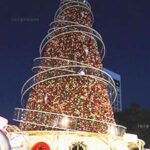 Celebrating Christmas in Hong Kong
Celebrating Christmas in Hong Kong 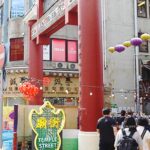 Temple Street 廟街
Temple Street 廟街  Festival Walk 又一城
Festival Walk 又一城  Ocean Park 海洋公園
Ocean Park 海洋公園 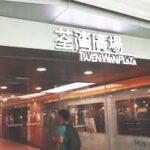 Tsuen Wan Plaza + Skyline Plaza 荃灣廣場+灣景廣場
Tsuen Wan Plaza + Skyline Plaza 荃灣廣場+灣景廣場 